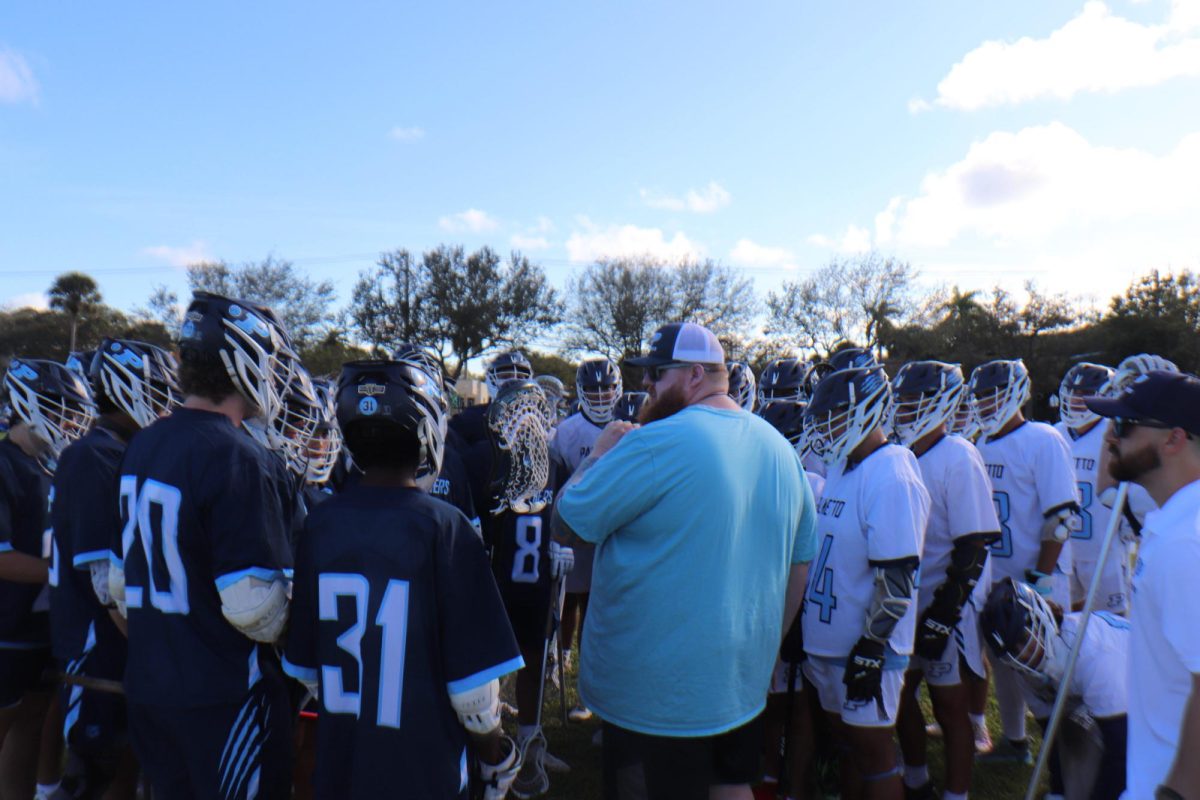One moment you are hustling on the field, dodging defenders and running a play, and the next moment, time seems to stop. As an athlete, one never expects the worst to happen, until it does. Dislocated shoulders, broken bones and sprained ankles all come and go, but torn Anterior Cruciate Ligaments remain prevalent within the Miami Palmetto Senior High community.
The U.S. sees over 350,000 ACL surgeries per year, an injury commonly seen in student-athletes who play basketball, lacrosse, soccer and football. Aside from the physical impacts, such long-lasting injuries could ruin a student’s athletic career.
With this, it is important to tread carefully when revealing the extent of an injury to an athlete. According to senior and Head Trainer of Sports Medicine, Samantha Kilpack, it is vital to remain calm and collected when treating such injuries.
“…If you’re calm the athletes, probably most of the time, will feed off of how you’re reacting. If you’re freaking out, they’re gonna be freaking out. So you kind of have to be professional about it,” Kilpack said. “…Giving them little information to ease their mind but not too much information to where they’re freaking out like, ‘oh my gosh, my ACL is torn.’”
Despite a trainer’s efforts toward mediating the chaos with a calm attitude, athletes are typically intuitive when it comes to their body.
“I was in a lacrosse tournament in Jacksonville, Florida and it was a no-contact movement where I was dodging my defender and I felt and heard a loud pop and that scared me the most, so I fell immediately to the floor. I was in shock,” \MPSH senior and Varsity Girls Lacrosse and Soccer player Emma Weinberg said. “I didn’t have any pain yet. But I immediately knew what happened.”
Any injury is difficult, but the experience of having a torn ACL as one’s first injury takes adjustment.
“…I never really realized how serious it was to get injured or just not be healthy in general. And when you aren’t allowed to do things that your friends are doing or you can’t do something because you’re injured…” Weinberg said. “I’ve never asked my friends or been there for my friends that have been injured… so now that I’m in this perspective, now I know how meaningful it is and how I have to be there for them next time.”
As Weinberg has discovered, the post-ACL surgery is a very difficult, mentally and physically draining process. Physical therapy can range from taking weeks to over a year long, often making an athlete feel discouraged and beaten down. Weinberg’s experience with physical therapy, for example, had its ups and downs.
“I’m really not motivated to go sometimes and just push myself to get there and… seeing my progress every week, I think I feel really weak when I’m there. I feel like my muscle isn’t improving. I get really frustrated with myself,” Weinberg said.
It is extremely difficult to spend substantial amounts of time working on strength and exercising the weak muscles while seeing a slow, gradual increase in progress..
“…the whole process is extremely mentally draining but I’m focused and determined to get back to playing…” Weinberg said.
Weinberg is not alone in this struggle. The majority of injured athletes face a loss of self-esteem, and often struggle with their self-identities outside of the sports world. As a result, these athletes are at risk for depression and anxiety. However, like Weinberg demonstrated, it is important to strive for a positive mindset throughout the process, or one will be overwhelmed with the “what ifs..” and regrets that led to this new position.
“It’s not the end of the world. Because there’s most of the time a fix for it…Just because this happened doesn’t mean you’re done,” Kilpack said.






